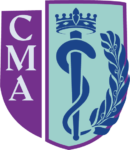Eighteen (18) months ago Americans 16 years of age and older gained access to a vaccine against -the SARS-CoV-2 virus which is responsible for the COVID-19. Children ages 12 to 15 have been eligible for thirteen (13) months and those ages 5 to 11 have been able to get a vaccination for seven (7) months. This past weekend Dr. Rochelle Walensky, Director of the Centers for Disease Control and Prevention (CDC), approved the unanimous recommendation of the CDC Advisory panel and the FDA so that children between the ages of 6 months and 4 years can now get this miraculous protection. The delay in this long awaited approval for our younger children has resulted from the need to establish an appropriate dosage and injection interval in this group of children who are less susceptible to the disease. It therefore takes a larger sample of trial volunteers and thus a longer time to conduct the trials. The long duration of the trials have resulted in a determination of the effectiveness as well as the safety of the regimens that are being recommended.
The vaccination of these children began yesterday, June 21, 2022. There are seventeen (17) million children in this 6 month to 4yr age group. The regimen for the Pfizer/Bio-N-Tech and Moderna remain somewhat different. If the Pfizer product is used in these younger children, it requires a three dose primary series of 3 micrograms (mcg) each. The first two doses are administered three weeks apart and the third dose is given eight weeks later. This compares to the two dose series 3 weeks apart of Pfizer at 10 mcg for 5 to 11 year olds, and 30 mcg for those 12 and older. As far as Moderna is concerned the doses for the 6mo to 5yr age group is a two primary dose series of 25 mcg each, one month apart. Moderna is not authorized by the CDC as of yet for ages 6-17. The FDA’s recommendation of 50 mcg a month apart for ages 6 to 11 years old, and 100 mcg (one month apart) for ages 12 to 17. CDC authorization is in the works.
It is noteworthy that researchers at our own Cincinnati Children’s Hospital were instrumental in conducting trials for these youngsters. These experts and others determined that the most common side effects of the vaccines were pain and sometimes swelling and/or redness at the injection site. A mild fever, generally not severe enough for acetaminophen or ibuprofen, occurred in 25% of the Moderna recipient as opposed to 10% of the Pfizer participants. Less than 1% of the fevers reached 104 degrees. The rare cases of myocarditis seen in adolescents were not apparent in this 6 month to 5 year age group. Based on the safety profile developed from extended trials, along with the continue monitoring and data collection after the roll out of shots in these little arms, experts are comfortable with going forward.
The question is whether or not parents will be comfortable getting their children vaccinated. We know that children in this age group are even less prone to serious infection and hospitalization from COVID-19 but they are not immune. Over 200 children in this age group have died from this disease since January, 2020. This represents a higher number of deaths than caused by any other communicable disease during this timeframe. The majority of these 17 million eligible children have already been exposed considering that 202,000 children have lost at least one parent to Covid-19, and there have been nearly eighty-seven million cases in the USA. Nevertheless any immunity inferred from infection has not proven to be long lasting. Vaccination of these young children provides an additional layer of protection which further lessens the likelihood of severe disease, hospitalization, and long term sequelae from COVID-19. The other end result is less disease proliferation and therefore less opportunity for virus mutation.
The availability of vaccination for this new age group is another major step in fighting COVID-19. A long and careful process has finally led to available protection for most of our remaining youngest. Providing them protection leaves the elderly and vulnerable less susceptible and is one more step toward normalcy.
Clyde E. Henderson, MD
Cincinnati Medical Association

